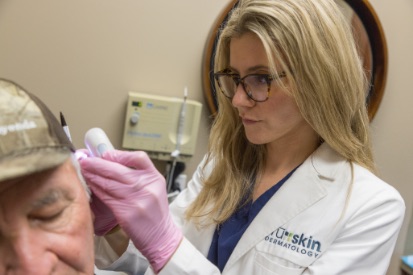Understanding Hyperhidrosis: What You Need to Know

Excessive sweating during Texas's warm, humid days is common, but for some, sweating persists even in air-conditioned rooms or during cool evenings. If you’ve ever felt like you’re sweating more than normal without a clear reason, you may be experiencing hyperhidrosis. This condition goes beyond typical perspiration and can significantly affect daily life.
What Is Hyperhidrosis?
Hyperhidrosis is a medical condition characterized by excessive sweating that surpasses the body’s normal requirements for temperature regulation. This condition can affect various areas, including the underarms, palms, soles of the feet, and even the face. For many individuals, the constant moisture and discomfort can lead to significant emotional and social challenges, impacting daily activities and quality of life.
Sweating is a natural and necessary bodily function that helps regulate temperature. However, for those with hyperhidrosis, the sweat glands become overactive, producing more sweat than is needed. This excessive sweating can occur even in cool environments or during periods of rest, making it an unpredictable and often distressing condition.
Symptoms and Types of Hyperhidrosis
Hyperhidrosis presents with persistent, excessive sweating that is not proportional to environmental conditions or physical activity. It is generally classified into two main types:
Primary Hyperhidrosis: This form typically affects specific areas of the body, such as the hands, feet, underarms, or face. It often begins in childhood or adolescence and is not associated with any underlying medical condition. Primary hyperhidrosis is believed to result from overactive nerve signals that stimulate the sweat glands.
Secondary Hyperhidrosis: This type is linked to an underlying medical condition or external factor, such as hormonal changes, infections, certain medications, or systemic illnesses. Unlike primary hyperhidrosis, secondary hyperhidrosis usually causes generalized sweating across larger areas of the body.
Living with hyperhidrosis can be both physically and emotionally taxing. Many individuals report feelings of embarrassment, anxiety, and frustration due to the visible signs of sweating and the need to frequently change clothing or avoid certain social situations.
The Impact of Hyperhidrosis
Hyperhidrosis can significantly affect various aspects of life, including:
Personal Relationships
Professional Life
Emotional Well-being
Seeking Help for Hyperhidrosis
If you’re experiencing excessive sweating in Texas’s challenging climate or any environment, consulting a dermatology provider is the first step toward finding relief. At Tru-Skin Dermatology, our team is dedicated to helping patients navigate this challenging condition. We can evaluate your symptoms, determine the type of hyperhidrosis you are experiencing, and recommend tailored treatment options to meet your needs.

Tru-Skin Dermatology Can Help
Schedule your appointment today to learn more about hyperhidrosis and explore solutions that can help you live comfortably and confidently.
Related Blogs

- General Dermatology
Read this blog to learn more about the causes of hair loss and the many treatment options offered at Tru-Skin Dermatology.
Read More
- Skin Cancer
- Skin Exams
- Sun Safety
Ensure early detection of skin cancer. Learn how often to get a full-body skin cancer screening. Stay proactive based on your risk factors.
Read More
- General Dermatology
- Chronic Skin Conditions
Discover the difference between hyperhidrosis and normal sweating. Learn how Tru-Skin Dermatology in Texas can help you manage excessive sweating.
Read MoreFeatured Products

CLn BodyWash
CLn BodyWash is designed for infection- and eczema-prone skin. It is an effective cleanser that is tough on the microbes but gentle on skin. Designed for skin prone to infection, irritation, dermatitis, redness, folliculitis, acne, eczema and compromised skin. 12 fl oz / 354 mL

EltaMD Moisture-Rich Body Cream
EltaMD Moisture-Rich Body Crème infuses compromised and dry, flaky, sensitive skin with long-lasting moisture and essential nutrients. It is the ideal daily moisturizer to help achieve and maintain softer, smoother, healthy-looking skin. 8 oz / 226 g



